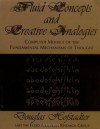251
Followers
4
Following
Manny Rayner's book reviews
I love reviewing books - have been doing it at Goodreads, but considering moving here.
Currently reading
The Greatest Show On Earth: The Evidence For Evolution
R in Action
Fluid Concepts and Creative Analogies
McGee on Food and Cooking: An Encyclopedia of Kitchen Science, History and Culture
Epistemic Dimensions of Personhood
Pattern Recognition and Machine Learning (Information Science and Statistics)
Relativity, Thermodynamics and Cosmology
The Cambridge Handbook of Second Language Acquisition
L'Invention du Big Bang
 The short version
The short versionAn excellent historical account of how the theory of the Big Bang was developed, from its beginning in Friedmann's 1922 paper to 1965, when Penzias and Wilson found proof in the form of the Cosmic Microwave Background Radiation. The author is an expert on the subject, has read all the primary sources, and writes well; the only drawback is that it's in French, and for some reason there doesn't appear to be a translation.
The long version
I'm always impressed by very smart people who know their own limitations. In his classic popular science text, The First Three Minutes, Steven Weinberg - a Nobel Laureate - gives a brilliant summary of the Big Bang theory, as of around 1977. He also admits cheerfully that he is a terrible historian, and hopes that someone more gifted in this area will do the necessary research and write the story of how the Big Bang was discovered. He particularly wants to see answers to a question which puzzles him: the Big Bang theory was more or less complete by the end of the 40s, but it wasn't until 1965 that any experimental evidence was found, and then it was discovered completely by accident. How could this have happened?
Well: I don't know if Jean-Pierre Luminet has said the last word on this subject, but he certainly seems to have uncovered a lot of good material. I found his account convincing, and it's a remarkably good illustration of how science really gets done, as opposed to how it theoretically ought to get done. He tells us here that the theory is mostly due to three people: Alexander Friedmann (early 1920s), Georges Lemaître (late 20s and early 30s), and George Gamow (late 40s and early/mid 50s). Of these, he thinks Lemaître made the largest contributions. Strike one to Weinberg already: his book only names Lemaître a single time, in a parenthesis.
As I found last week when I read Lambert's comprehensive biography of Lemaître, it does indeed seem true that the scientific community had trouble accepting the Big Bang theory. Luminet starts in 1920, with Friedmann, a Russian mathematician, physicist and balloon enthusiast. Friedmann read Einstein's and Hilbert's first papers on General Relativity, and was immediately hooked by the beauty and elegance of the theory. But even though he loved the new picture given by Relativity, he wasn't convinced by Einstein's initial model of the universe, a closed, static space uniformly filled with stars. De Sitter had an alternate solution, in which the universe expanded, but this was even less attractive, since de Sitter's universe was empty of matter.
Friedmann wondered if other consistent models were possible, and soon found one: a closed, dynamic universe containing matter, that started at an infinitely dense singularity, expanded, and then collapsed back to another infinitely dense singularity. Friedmann wasn't sure if the model had anything to do with the real universe, but he was a mathematician, and it was interesting enough to be able to prove that the equations had more solutions. He submitted a paper to the German journal where most of the top physicists published their results. Einstein refereed it, and sent it back; he claimed, incorrectly, that he'd found an error in Friedmann's calculations. Friedmann luckily had a friend at the journal, and got news of Einstein's objections even before he received the official rejection letter. He mailed Einstein directly and defended his ideas. Einstein was travelling around and hard to contact, but Friedmann's friend tracked him down and got him to admit that his criticisms were unfounded. Friedmann's paper was finally published, and in 1924 he submitted a second one. Unfortunately, at this point his ballooning career interrupted his scientific work; he made a record ascent to 7,400 meters, but caught pneumonia and died a few weeks later at the tragically young age of 37.
Shortly afterwards, the Belgian priest-scientist Georges Lemaître started looking at the problem, and also found solutions to Einstein's field equations which described an expanding universe. In contrast to Friedmann, who was looking at the problem from a purely theoretical viewpoint, Lemaître had been talking to observational astronomers in the US - Hubble, Shapley and Slipher - who had found evidence that most galaxies were moving away from us. It is extraordinary how illogical history can be when you look at the details. Einstein not only told Lemaître bluntly that he was a terrible physicist, but further embarrassed him by saying that Friedmann had come up with a similar theory a few years earlier. Lemaître did not know German, and was unaware of Friedmann's work. Ironically, when he published his own paper in 1927, he wrote it in French, and the American astronomers, who didn't know French, in turn missed his contribution. Lemaître was the first person to formulate a tight mathematical description of an expanding universe and back it up with experimental evidence, but no one took much notice. Hubble published a much weaker paper in 1929, where he announced a linear relationship between distance and speed of recession for distant galaxies, but did not offer an explanation; indeed, Hubble never even believed that the universe was expanding. None the less, Hubble's paper got widely read, and the distance/speed relationship was now enshrined as Hubble's Law.
Even if Hubble didn't want to believe it, most physicists now agreed that the universe had to be expanding. With the benefit of hindsight, it seems extraordinary that everyone did not at once understand that this meant some version of the Big Bang must be correct. In actual fact, leading scientists, in particular Einstein, were skeptical; Eddington, Lemaître's former mentor, said openly that he found the idea of the universe having a beginning "philosophically repugnant". Lemaître published a new paper in 1931 where he explicitly suggested the idea that things started with a "primeval atom", and used arguments from quantum mechanics and thermodynamics to justify the reasoning. The US popular press gave him support - they liked the drama of a priest challenging the scientific establishment on this question - but the scientists were unconvinced. To be fair to them, Lemaître was much weaker on nuclear physics than cosmology, and his picture of the universe starting with a huge atom breaking down into smaller ones was wrong. He gave up and moved into other areas, in particular numerical simulation.
A few years later, World War II began, and cosmology as such went on hold for a while; but the atomic bomb project meant that people's understanding of nuclear physics was enormously deepened. George Gamow, an old student of Friedmann's who had since defected to the US, had good contacts in the nuclear science community and picked up the torch. He was able to use the new methods to construct a detailed model of what the initial stages of the Big Bang would look like, and show that they would be the opposite of what Lemaître had been saying. Instead of a huge atom breaking up into smaller pieces, you would start with protons fusing together into bigger nuclei. Gamow did calculations, and predicted that the echoes from the hot beginning of the universe would still be around today, as background radiation with an effective temperature of about 5 degrees Kelvin. And then... nothing happened for over a decade. As Weinberg says, most people now believed in Fred Hoyle's Steady State Theory, which held that the universe expanded, but always stayed more or less the same, with new matter being continuously created to fill in the gaps; no scientists went out looking for the background radiation Gamow had predicted, until it was found by accident in 1965. Why? Luminet considers the question carefully, and identifies a number of factors.
First, no one realised for a long time that Hubble and his colleagues had made a serious mistake when they measured the distances to other galaxies; they had systematically underestimated distances, and as a result the universe appeared to be smaller and faster-expanding than it really was. This meant that a straightforward Big Bang theory predicted an age for the universe of only about two billion years, which was far too young. There were ways to explain the discrepancy, but they weren't elegant, and by the time the distance measurements had been corrected the theory had somehow been tarnished.
Second, there was a disconnect between the observational astronomers and the theoreticians. The observational people had little interest in the Big Bang theory, which they wrote off as wild speculation; and the theoreticians didn't spend enough time talking with the observational astronomers to learn that the background radiation could easily be detected with current instruments. Because they didn't believe anyone could find it, they never suggested that people should look.
Third, scientists were unconvinced by the people championing the Big Bang theory. Friedmann died young, and didn't have much of a chance to defend his ideas; Lemaître was a Roman Catholic priest, and almost pathologically modest about his achievements; and Gamow was an inveterate joker, who also drank more than was good for him. The scientific community never gave their arguments the weight they deserved.
Last, but not least, there was scepticism about a theory which seemed uncomfortably close to the Biblical account. Even if he hadn't got sick, Luminet thinks Friedmann might well have been picked up by the Chekha and executed as a counter-revolutionary; the Communist authorities didn't like his theoretical work and he was suspected of being a creationist, apparently a capital offence in early Leninist Russia. Lemaître was often accused, by all accounts completely unjustly, of using his scientific status to push the Church's religious beliefs. In general, after the often ridiculous debate on evolution, there was a feeling that support from the Bible was not a plus.
In the end, though, the 1965 discovery of the Cosmic Microwave Background Radiation convinced almost everyone that the Big Bang theory was correct. Some more ironic footnotes: Hoyle never publicly admitted that his Steady State theory was wrong, and Penzias and Wilson, who discovered the CMBR, said afterwards that they didn't believe at the time that it proved the correctness of the Big Bang; rather like Hubble, they found the rival theory, this time Hoyle's, more convincing. As Luminet says, the gulf between the theoreticians and the experimentalists was rather startling.
So, in this case, the truth won. But what an unconvincing victory! It really make me wonder what other theories are currently being discounted by the mainstream scientific establishment, and are languishing for want of experimenters prepared to go and look for proof which is right under their noses...











